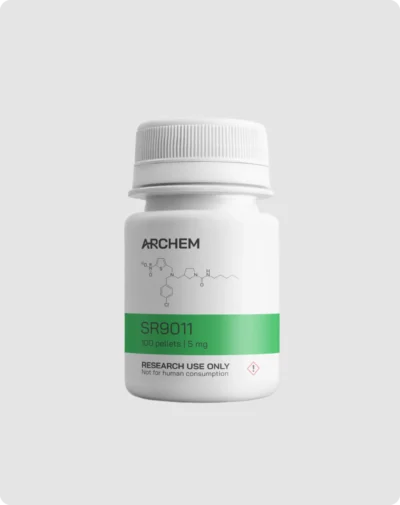Description
RAD-140 SARM Pellets
RAD-140 stands out for its highly selective mechanism of action. Unlike traditional anabolic compounds, it focuses almost exclusively on muscle and bone tissue, avoiding broader androgenic effects. This selectivity allows researchers to examine its anabolic potential with a significantly reduced risk profile.
One of RAD-140’s unique features is its non-steroidal structure. This provides high oral bioavailability and ensures metabolic stability, making it an efficient option for both in vitro and in vivo research.
Chemical Properties
- Chemical Name: 2-Chloro-4-[(1R,2S)-1-[5-(4-cyanophenyl)-1H-pyrazol-1-yl]-2-hydroxypropyl]benzonitrile
- Molecular Formula: C20H16ClN5O2
- Molecular Weight: 393.83 g/mol
- CAS Number: 1182367-47-0
- IUPAC Name: (2S)-3-(4-cyanophenoxy)-N-[(1R)-1-(4-fluorophenyl)-2-hydroxyethyl]-2-methyl-2-propanamine
Important Documents
Mechanism of Action
RAD-140 functions by selectively binding to androgen receptors (AR) in muscle and bone tissues, mimicking the effects of endogenous androgens. This selective binding induces anabolic activity in these tissues, promoting muscle growth and bone density, while sparing androgen-sensitive tissues such as the prostate and sebaceous glands. The selective nature of RAD-140’s action is attributed to its unique chemical structure, which facilitates tissue-specific receptor binding and activation.
Pharmacokinetics
Studies have demonstrated that RAD-140 exhibits high oral bioavailability, making it a convenient candidate for oral administration. Its half-life allows for once-daily dosing, maintaining stable plasma concentrations conducive to therapeutic efficacy. Metabolic profiling indicates that RAD-140 undergoes hepatic metabolism, with primary excretion via the renal pathway.
Legality and Regulatory Status
Current Legal Classification
RAD-140 is classified as a research chemical. It is not approved for human consumption, therapeutic use, or veterinary applications. Its use is limited to laboratory research under strict regulatory oversight.
Controlled Substance Status
In many countries, including the United States, RAD-140 is not currently listed as a controlled substance. However, it is included under the category of substances regulated by the Selective Androgen Receptor Modulators Control Act of 2018. This legislation places SARMs, including RAD-140, under scrutiny due to their misuse in athletic performance enhancement.
International Regulations
The legal status of RAD-140 varies globally:
- United States: Permitted for research use but not for over-the-counter sale or supplementation.
- European Union: Subject to similar restrictions, with distribution limited to licensed researchers.
- Australia and New Zealand: RAD-140 is classified as a prescription-only medicine, restricting its use outside of approved medical or research settings.
- Asia: Regulations differ, with certain countries like China imposing restrictions on its distribution and use.
Compliance Requirements
To ensure legal use:
- Maintain accurate records of your RAD-140 Research and ensure storage and use complies with institutional policies and local regulations.
- Avoid any activities that may be interpreted as promoting its use in humans or animals outside research environments.





